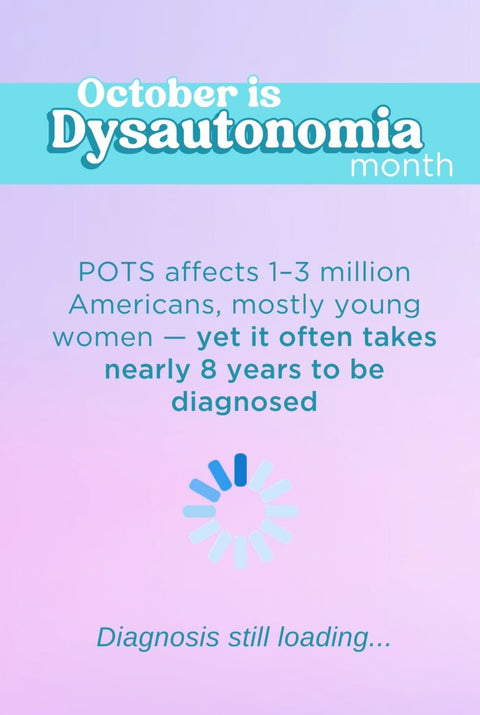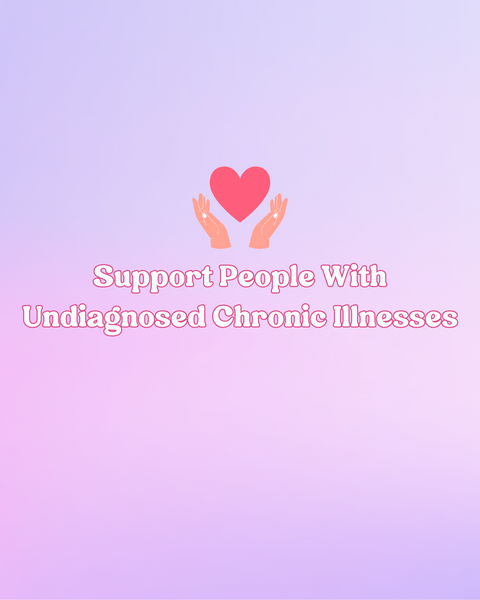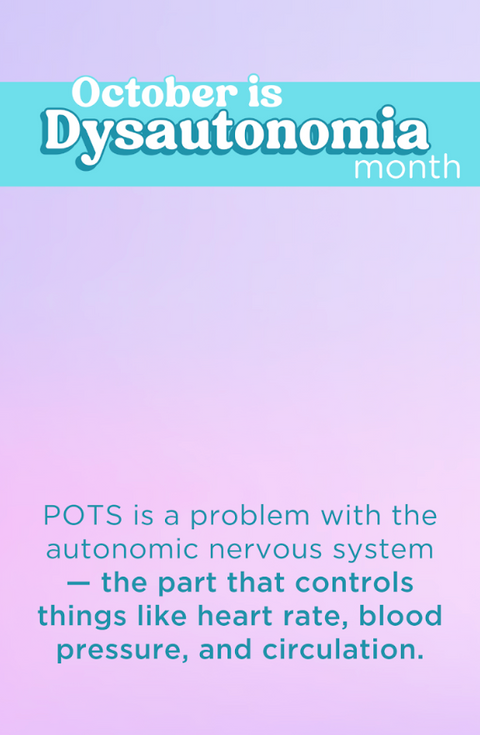Why Awareness Matters for POTS
Imagine living with constant dizziness, a racing heart every time you stand, and bone-deep fatigue that never lets up—yet hearing from doctors that it’s “just stress” or “just anxiety.” This is the reality for many people with Postural Orthostatic Tachycardia Syndrome (POTS), a condition that affects circulation and the autonomic nervous system. Despite being widespread, POTS remains misunderstood, underdiagnosed, and often dismissed.
Raising awareness matters because awareness shortens the road to answers, reduces isolation, and changes the future of care. Let’s unpack why this is so urgent and what each of us can do.
The Scope of the Problem
POTS is NOT rare. It affects an estimated 1–3 million Americans, most of them young women in their teens and twenties. Yet, the average time to diagnosis is nearly eight years. That’s almost a decade of unanswered questions, unnecessary suffering, and treatments that don’t address the real problem.
The gap between prevalence and recognition is staggering. If POTS were better known, millions of people could move from confusion to clarity much sooner. Instead, patients often go through countless appointments, tests, and misdiagnoses before they finally hear the word “POTS.”
Misunderstood and Misdiagnosed
Part of the challenge is that POTS symptoms overlap with common conditions. Fatigue, lightheadedness, brain fog, and palpitations can sound like stress, anxiety, or even just being “out of shape.” For young women, in particular, symptoms are too often dismissed.
This pattern leads to a painful cycle: patients know something is wrong, but when their experiences are minimized, they begin to doubt themselves. Some even stop seeking care altogether, believing they’ll never be taken seriously.
Awareness can break this cycle. When more people—clinicians, families, and patients themselves—know what POTS looks like, the red flags are harder to ignore.
Awareness Shortens the Road to Diagnosis
Studies show that education makes a difference. When clinicians are familiar with POTS, diagnosis times shrink dramatically—from years to months. That means earlier access to treatments like salt and fluid management, compression garments, physical therapy, and medications that help stabilize symptoms.
For patients, this can be life changing. Instead of losing years to confusion, they can focus on adapting, finding support, and regaining independence. Awareness is not just about recognition—it’s about reclaiming time, energy, and opportunities that would otherwise be lost.
The Power of Validation
Awareness is also emotional. Imagine finally putting a name to what you’ve been experiencing. Suddenly, you’re not alone. There’s a community of people who understand. There’s research, resources, and a roadmap for managing symptoms.
Many people with POTS describe the moment of diagnosis as both relief and grief. Relief, because they finally feel heard. Grief, because of the years spent being doubted. The more we raise awareness, the fewer people will have to endure that long, lonely path.
Breaking the Isolation
One of the hardest parts of living with an invisible illness is feeling unseen. People with POTS often look healthy from the outside, but inside, their bodies are in constant battle. Awareness reduces that invisibility.
When teachers, employers, and peers know what POTS is, they can offer understanding instead of judgment. When friends hear about the condition, they can provide empathy instead of dismissal. Every story shared, every conversation started, chips away at the isolation.
Why October Matters
October is Dysautonomia Awareness Month, a time when patients, advocates, and healthcare professionals come together to shine a light on conditions like POTS. Every conversation during this month matters. Each social media post, community event, or shared article spreads recognition further.
It might feel small—one post, one conversation—but awareness grows exponentially. The more people know, the easier it becomes for the next person to be recognized, supported, and diagnosed.
Joining the Conversation
Awareness isn’t just for those living with POTS. Everyone can help create change:
-
Patients can share their stories to help others feel less alone.
-
Families and friends can listen and validate, learning alongside their loved ones.
-
Healthcare providers can stay curious, ask deeper questions, and consider POTS as part of differential diagnoses.
-
Advocates can amplify the message during Awareness Month and beyond, ensuring POTS is part of larger conversations about chronic illness.
The goal isn’t simply to spread information—it’s to create a culture of recognition, support, and urgency for chronic illness awareness.
Looking Forward
Raising awareness doesn’t solve everything. There’s still a need for more research, better treatments, and broader understanding within the medical community. But awareness is the first step. Without it, patients stay invisible. With it, they gain pathways to answers, treatments, and hope.
Awareness matters because lives are profoundly shaped by recognition. When POTS is understood, patients are no longer “mystery cases.” They are people with a real condition that deserves real solutions.
A Call to Action
If you’ve read this far, you’re already part of the awareness movement. Share what you’ve learned, by sharing POTS awareness grows and how more people can find faster, accurate diagnosis. Mention POTS in your circles. Support organizations that are pushing for better research and resources.
For millions living with POTS, awareness can mean the difference between years of struggle and a future with clarity and support. This October, let’s make sure their voices are heard, their symptoms are recognized, and their paths to care are shorter and kinder.




Comments (0)
There are no comments for this article. Be the first one to leave a message!